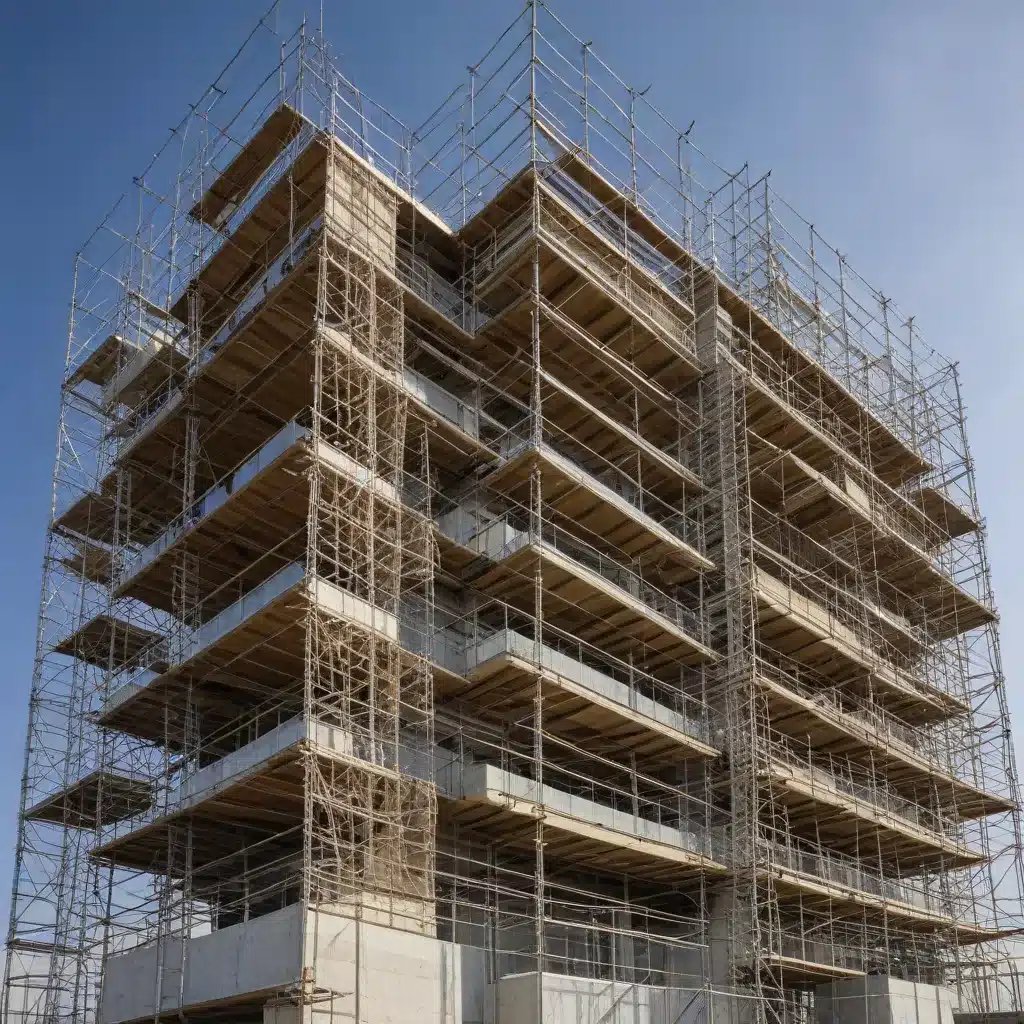
Embracing the Future of Scaffolding: Transforming UAE’s Construction Landscape
The construction industry in the United Arab Emirates (UAE) has witnessed a remarkable transformation in recent years, driven by a relentless pursuit of innovation and a steadfast commitment to safety. At the heart of this evolution lies the pivotal role of scaffolding – a critical component that has undergone a remarkable metamorphosis, reshaping the way construction projects are executed.
Compliance with Local Regulations: The Cornerstone of Scaffolding Practices
In the UAE, the regulation and oversight of scaffolding practices fall under the purview of various governmental authorities, including the Ministry of Human Resources and Emiratisation (MOHRE) and the Dubai Municipality. These entities have implemented a comprehensive framework of guidelines and standards to ensure the safety and well-being of construction workers and the public.
One of the key regulations is the UAE Fire and Life Safety Code of Practice, which outlines detailed requirements for the design, installation, and maintenance of scaffolding systems. This includes specifications for the materials used, load-bearing capacities, and mandatory safety features such as guard rails, toe boards, and access ladders. Compliance with these regulations is not only a legal obligation but also a critical safeguard in preventing accidents and minimizing the risk of catastrophic incidents.
Dubai Municipality’s Fire and Life Safety Code of Practice
Innovative Scaffolding Solutions: Enhancing Safety and Efficiency
As the UAE construction industry continues to evolve, the demand for innovative scaffolding solutions has become increasingly prevalent. Contractors and construction companies are actively seeking out cutting-edge technologies and practices that not only ensure compliance with local regulations but also enhance overall site safety and efficiency.
One such innovation is the growing adoption of modular scaffolding systems. These prefabricated, interlocking components offer a streamlined and versatile approach to scaffolding, allowing for faster installation and disassembly without compromising structural integrity. By reducing the reliance on traditional timber or metal poles, modular systems minimize the risk of manual handling injuries and offer a more adaptable solution to accommodate the diverse needs of construction projects.
Another innovative trend is the implementation of digital monitoring and control systems for scaffolding. These advanced technologies leverage sensors, cloud-based platforms, and real-time data analytics to provide construction teams with a comprehensive understanding of the scaffolding’s performance and structural integrity. This data-driven approach enables proactive maintenance, early identification of potential issues, and enhanced decision-making, ultimately contributing to a safer and more efficient construction environment.
Cost Management Strategies: Balancing Safety and Budgets
The cost associated with scaffolding represents a significant portion of the overall construction budget, making it a critical consideration for project managers and contractors. In the UAE, where the construction industry is highly competitive, finding the right balance between safety, compliance, and cost-effectiveness has become a strategic imperative.
One effective cost management strategy is the implementation of rental-based scaffolding solutions. By opting for a rental model, contractors can avoid the upfront capital investment required for purchasing scaffolding equipment, while still benefiting from the latest technologies and safety features. This approach not only reduces the financial burden but also allows for greater flexibility in adapting to the evolving needs of a construction project.
Moreover, the adoption of modular scaffolding systems, as mentioned earlier, can contribute to cost savings by reducing the time and labor required for installation and dismantling. These streamlined processes translate into lower overall expenses, making them a popular choice among construction companies in the UAE.
| Scaffolding Technique | Estimated Cost per Square Meter (USD) |
|---|---|
| Traditional Scaffolding (Timber or Metal Poles) | $12 – $18 |
| Modular Scaffolding Systems | $10 – $15 |
| Rental-Based Scaffolding Solutions | $8 – $12 |
It’s important to note that these cost estimates are based on the current market conditions in the UAE as of September 2024 and may be subject to fluctuations due to factors such as material costs, labor rates, and market competition.
Embracing Safety: The Cornerstone of Scaffolding Practices
Ensuring the safety of construction workers and the general public is a paramount concern in the UAE’s construction industry. Scaffolding, being a critical component of most construction projects, plays a pivotal role in upholding safety standards.
In addition to the mandatory compliance with the UAE Fire and Life Safety Code of Practice, construction companies in the UAE have also embraced a range of best practices and innovative safety measures. This includes the widespread use of personal protective equipment (PPE) for workers, such as harnesses, safety boots, and hard hats, as well as the implementation of rigorous inspection and maintenance protocols for all scaffolding systems.
Furthermore, comprehensive training programs have become essential, equipping workers with the knowledge and skills to properly erect, use, and dismantle scaffolding structures. This emphasis on worker safety not only safeguards the well-being of individuals but also contributes to the overall productivity and efficiency of construction projects.
Shehad Ahmed Scaffolding, a leading provider of scaffolding services in the UAE, has been at the forefront of championing these safety-centric practices. By investing in state-of-the-art equipment, comprehensive training programs, and a robust quality assurance system, the company has established a reputation for delivering projects with the highest standards of safety and compliance.
Conclusion: Embracing the Future of Scaffolding in the UAE
The construction industry in the UAE has undoubtedly entered a new era of innovation, driven by a relentless pursuit of enhanced safety, efficiency, and cost-effectiveness. At the heart of this transformation lies the critical role of scaffolding – a once-traditional element that has now evolved into a dynamic and technologically-advanced component that is shaping the future of construction practices.
Through the implementation of robust regulatory frameworks, the adoption of innovative scaffolding solutions, and the unwavering focus on cost management strategies, the UAE construction sector is poised to lead the way in revolutionizing the industry. By embracing these advancements, construction professionals in the UAE can look forward to a future where safety, compliance, and productivity converge, paving the way for a more sustainable and resilient built environment.
